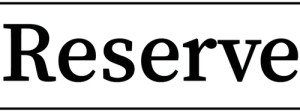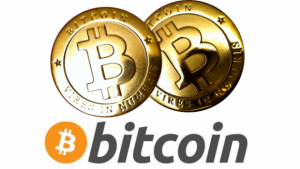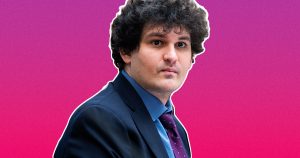Cryptocurrency “Reserve,” Advised by Former SEC and CFTC Commissioners, Closes 5 Million in First Round with Peter Thiel, Coinbase, Distributed Global, GSR.io
 SAN FRANCISCO, CA – Peter Thiel, Coinbase, GSR.io, Distributed Global, and 40 other funds and angels, have invested $5 million collectively in a seed round for Reserve, a developmental-stage stable-value cryptocurrency project based in the San Francisco Bay Area founded by Nevin Freeman, a technology and media entrepreneur, and Matt Elder, an engineer with a background in formal verification. Reserve is composed of a 20-person team including engineers from Google and OpenAI, an algorithmic hedge fund founder, and former members of other startups. Strategic advising relationships include monetary economists, sociological experts, hedge fund founders, and Patomak Global Partners, a financial services consultancy led by former SEC Commissioner Paul Atkins that includes former officials from the SEC, CFTC, Federal Reserve, OCC, and Treasury Department.
SAN FRANCISCO, CA – Peter Thiel, Coinbase, GSR.io, Distributed Global, and 40 other funds and angels, have invested $5 million collectively in a seed round for Reserve, a developmental-stage stable-value cryptocurrency project based in the San Francisco Bay Area founded by Nevin Freeman, a technology and media entrepreneur, and Matt Elder, an engineer with a background in formal verification. Reserve is composed of a 20-person team including engineers from Google and OpenAI, an algorithmic hedge fund founder, and former members of other startups. Strategic advising relationships include monetary economists, sociological experts, hedge fund founders, and Patomak Global Partners, a financial services consultancy led by former SEC Commissioner Paul Atkins that includes former officials from the SEC, CFTC, Federal Reserve, OCC, and Treasury Department.
According to Freeman, investors were eager to invest significantly more than the size of the round, but the team decided to keep it small since the round was a partnership-building move, not intended to maximize capital raised. “We stacked the deck with people who understand what we are doing and have something important to contribute as we get it off the ground. In addition to our big-name investors, we are working with founders and early CEOs of TechCrunch, and Betfair, the Director of Product and Revenue at Tinder, three early high-up PayPal team members, the technical founder of a multi-billion dollar telecommunications company, two heads of major startup incubators, other influential crypto funds like NEO Global Capital, Fenbushi and PreAngel, and others like that.”
Reserve is an attempt to compete with failing fiat currencies that lose their value at alarming rates every year. According to the Reserve team, they’ve selected 16 countries with this problem, where citizens have trouble saving money as a result of high inflation.
“When I discovered Bitcoin in 2011, I was excited by the idea that we could have a currency not backed by governments, but I worried that the market price would never stabilize and so it wouldn’t work in place of normal money,” said Freeman. “Leaders in the crypto world have wondered about how to solve this for years, but multiple attempts at price-stable crypto have failed, and I’m not convinced that any of the new entrants in the space will work either. That’s why my team and I are building Reserve.”
Reserve is being developed on the heels of experts predicting that “Bitcoin is ‘a bubble that is bound to burst,’” largely due to its price instability. During the last 18 months, the price of bitcoin climbed from below $1,000 to nearly $20,000, and as of today is less than half that.
“Put simply: nobody wants to spend a token that may be worth twice as much next month to buy a carton of milk, and nobody wants to store their savings in a token that may be worth nothing in a year,” said Elder, who designed the protocol with Nevin. “Vitalik Buterin, the Founder of Ethereum, put it like this: ‘One of the main problems cited about cryptocurrency is the fact that it’s volatile; although many users and merchants may want the security and convenience of dealing with cryptographic assets, they may not wish to face the prospect of losing 23% of the value of their funds in a single day.’”
Though stability has been the team’s top focus, Reserve, if developed, will be more than a stablecoin. It will be what Freeman and his team call a full-stack open currency – a cryptocurrency that is relatively stable in purchasing power, fast and cheap to transfer, easy to store, private to transmit in limited amounts, and impractical for criminal use. In this way, it aims to unlock the potential to use crypto like the cash we’re used to, but with the added benefits of instant global availability and robustness to government corruption and incompetence. (Of course, the team developing Reserve faces many technical, regulatory, and economic hurdles, and success is not assured.)
Freeman said that the code will be open sourced sometime before launch and the company doesn’t plan to pursue any intellectual property protections, but that they are keeping the technical details under wraps while they develop it. According to Freeman, the protocol is fully decentralized and works by locking up other cryptoassets in a smart contract in order to provide backing to the Reserve token and stabilize its price.
“A working stablecoin might be the greatest business opportunity of the decade. If a price-stable cryptocurrency seriously eats into the market for government-issued currency, we could see the first trillion-dollar company,” said Tucker Waterman, Managing Partner at Distributed Global, which led this investment round. “Getting it right is harder than people tend to think. We’ve been really impressed with the Reserve team’s progress and adaptability, and we’re excited to partner with them on making this a reality.”
In the long-term, the team at Reserve is attempting to create a stable currency that can serve as an alternative to local fiat currencies, particularly for those who live in nations with volatile currencies and limited income.
“Over the last four decades, many countries in the developing world have been left behind by the global financial system,” said Freeman. “With inflation rendering their money unable to store value, hundreds of millions have been cast into a state of perpetual poverty, unable to obtain basic necessities, let alone participate in international investment and trade. Up against corrupt governments and banks with limited services that aren’t trustworthy, citizens are basically resorting to hoarding their cash under their mattresses. Reserve is aiming to change that, allowing those most vulnerable to store, invest, and transfer their wealth, all over the Internet, via their mobile device.
“Take remittances as another example,” added Freeman. “The biggest flow of funds from the developed world to the developing world is remittances, where people who have left their home countries are sending money back to their families. It’s a $500 billion dollar industry per year and it’s growing and those who are most vulnerable are getting ripped off due to an average transaction fee of something like 7%. Reserve, which doesn’t require you to go through an intermediary, can empower hundreds of millions to take control of their currency. If we succeed, it will be a major step forward for the open currency movement.”
About Reserve
Reserve, if developed successfully, will be a fully decentralized currency that brings the stability of the U.S. dollar into the crypto world, unlocking the ability to use crypto like the cash we’re used to, but with the added benefits of instant global availability and robustness to government corruption and incompetence. To learn more, visit www.reserve.org, read our blog post about how we think about stablecoins, or join us at www.facebook.com/reserveprotoc








